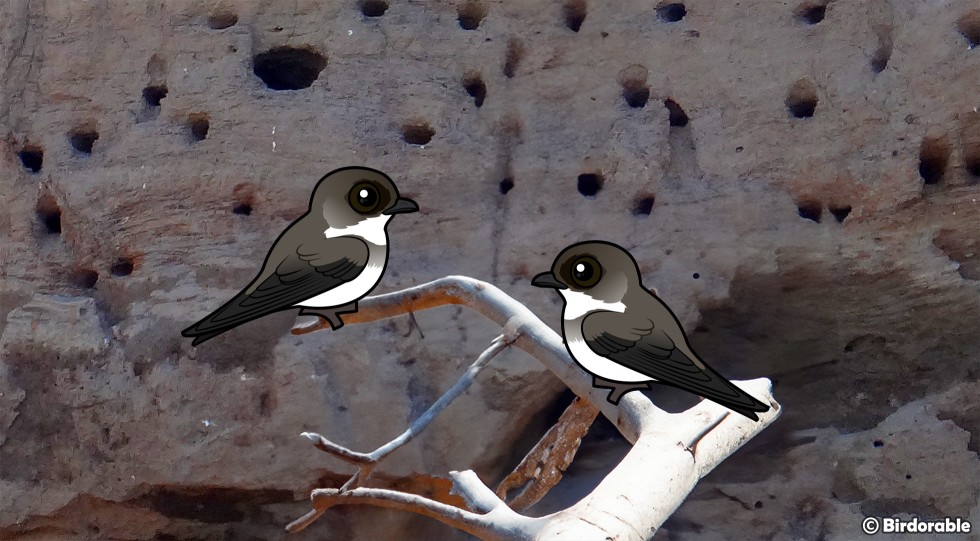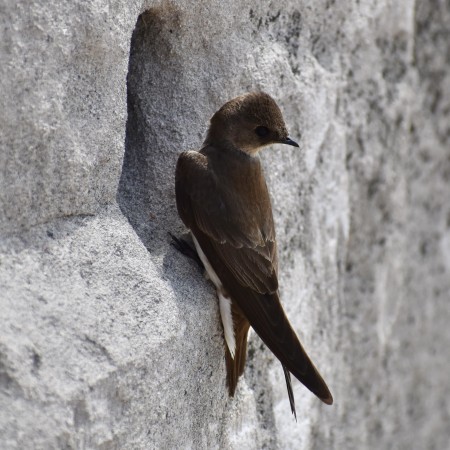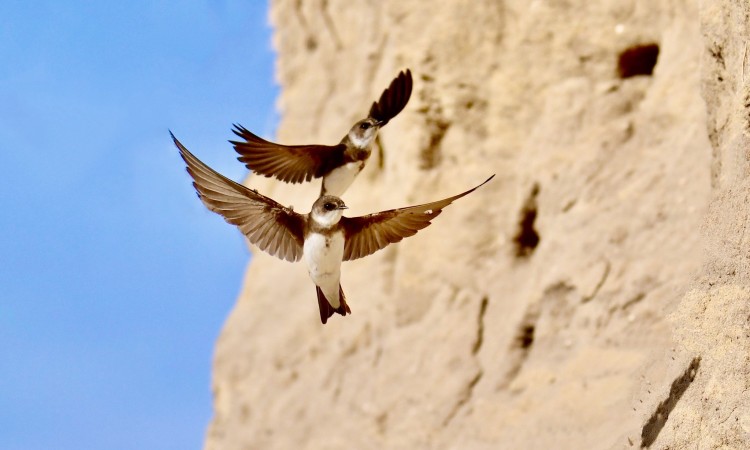Swallow Week 2024: Bank Swallow
Discover the Interesting World of the Bank Swallow

Today we're introducing a new member to our Birdorable family in honor of Swallow Week: it's our Birdorable Bank Swallow.
The Bank Swallow (Riparia riparia) is a small, agile bird with a distinctive brown back, white underparts, and a unique band across its chest. This bird, the smallest swallow in North America, holds a special place in the hearts of bird enthusiasts for its remarkable characteristics and behaviors. Let's dive into some interesting facts about the Bank Swallow, its longevity, conservation status, diet, habitat, and nesting habits.
Bank Swallows are highly sociable during their breeding season. They nest in large colonies that can include hundreds, sometimes thousands, of individual nests.
These birds are expert flyers, catching insects mid-air with their mouths. Their flight is fast, with quick wing beats and sudden turns and dives. Despite their small size, like most swallow species they are long-distance migrants, wintering in South America and breeding across North America, Europe, Asia, and North Africa.

Bank Swallow at Montrose Beach, Chicago by Raed Mansour (CC BY 2.0 DEED)
Bank Swallow populations have been declining in several areas due to habitat loss, pesticide use, and challenges due to climate change. They are particularly vulnerable because they rely on undisturbed riverbanks and sandy cliffs for nesting. The species is currently listed as Least Concern by the IUCN, but the declines in some regions have raised conservation concerns.
Bank Swallows feed almost exclusively on flying insects, including flies, mosquitoes, mayflies, and beetles. They catch their prey in flight, using their acrobatic flying skills to maneuver and capture insects. This diet makes them valuable for controlling insect populations, including agricultural pests and disease-carrying mosquitoes.
The Bank Swallow's name comes from its unique nesting habits; it lives and breeds primarily in sandy banks along rivers, lakes, and quarries. These habitats provide the vertical surfaces necessary for the birds to excavate their nesting tunnels. Across their Old World range, Bank Swallows are known as Collared Sand Martins.
One of the most fascinating aspects of the Bank Swallow's life is its nesting behavior. They dig tunnels in vertical sand or dirt banks, often forming large colonies with many nests close together. They use their specially adapted small conical bills, feet, and wings to dig out their burrows. Each tunnel, typically 2-3 feet deep, ends in a nesting chamber where the female lays 4-5 white eggs.
Both parents share in feeding the chicks, which fledge about three weeks after hatching. The communal aspect of their nesting sites provides some protection against predators, although the nests are still vulnerable to disturbances and predation.
The Bank Swallow is a remarkable bird with fascinating behaviors, from its long-distance migrations to its unique nesting habits. Despite facing challenges from habitat loss and other threats, conservation efforts aim to ensure that these agile flyers continue to grace our skies and riversides for generations to come.

European Sand Martins (Bank Swallows) in Portugal by Luiz Lapa (CC BY 2.0 DEED)













Comments
Leave a comment
Thank you!